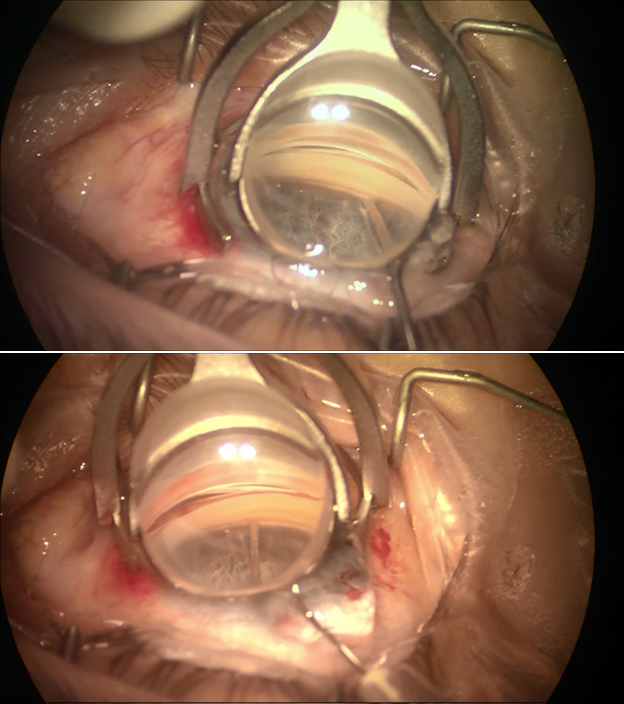Triple procedure for cataract and glaucoma
Triple procedure lowers IOP and medication use at one year

Howard Larkin
Published: Saturday, June 6, 2020
 Linda L Burk MD
Linda L Burk MD Top: Kahook Dual Blade removes trabecular meshwork Above: Viscoelastic cannula fits snug into Schlemms Canal and allows viscoelastic to directly dilate the collector channels.[/caption]
Rejuvenation
The combined goniotomy-viscodilation-cataract procedure results from a four-year search for a combined glaucoma procedure that is effective in lowering IOP, economical and compatible with implantation of premium lenses, Dr Burk said. Among its advantages are ease of combining the glaucoma procedures with cataract surgery, no expensive hardware needed, no foreign bodies left behind, a low complication rate and fast recovery.
Perhaps more importantly, the procedure removes diseased trabecular meshwork and creates direct access to multiple collector channels. This allows direct viscodilation with nothing more than a Healon cannula, restoring aqueous outflow, Dr Burk said.
“Many glaucoma experts think the collection channels are damaged beyond repair. I beg to differ. I think they can be rejuvenated by this technique,” Dr Burk concluded.
Top: Kahook Dual Blade removes trabecular meshwork Above: Viscoelastic cannula fits snug into Schlemms Canal and allows viscoelastic to directly dilate the collector channels.[/caption]
Rejuvenation
The combined goniotomy-viscodilation-cataract procedure results from a four-year search for a combined glaucoma procedure that is effective in lowering IOP, economical and compatible with implantation of premium lenses, Dr Burk said. Among its advantages are ease of combining the glaucoma procedures with cataract surgery, no expensive hardware needed, no foreign bodies left behind, a low complication rate and fast recovery.
Perhaps more importantly, the procedure removes diseased trabecular meshwork and creates direct access to multiple collector channels. This allows direct viscodilation with nothing more than a Healon cannula, restoring aqueous outflow, Dr Burk said.
“Many glaucoma experts think the collection channels are damaged beyond repair. I beg to differ. I think they can be rejuvenated by this technique,” Dr Burk concluded.